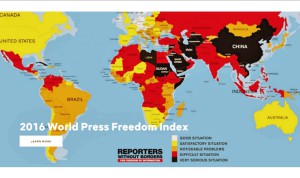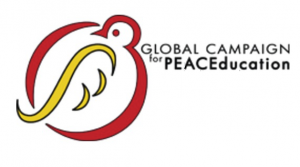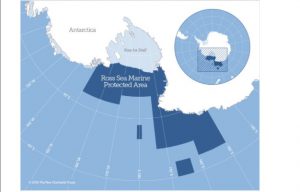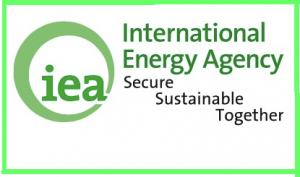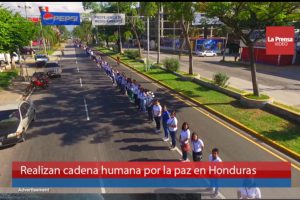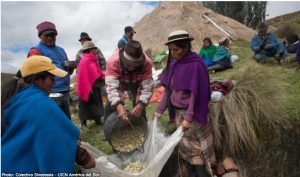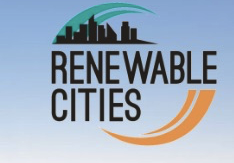
According to one strategy, cities can play the key role in the transition to a culture of peace. The state is inextricably involved with the culture of war. As a result, it has been proposed that we need a United Nations that is based not upon Member States, but upon regional associations of cities and towns. After all, cities and towns have no vested interest in the culture of war, no armies, no military contracts, no border defenses, and no recent history of maintaining power through armed force.
CPNN has carried many articles on the promotion of a culture of peace by cities. Articles since 2015 are listed below.
From Trauma to Healing: New Book Series from International Cities of Peace
United States: Six years as a ‘City of Peace’: Happy anniversary, Ashland!
International Cities of Peace: May Newsletter
Mexico: Initiative for a Law on Peace in Durango
Mayors for Peace: The Hiroshima Appeal
Guest Opinion: Why become an International City of Peace?
Medellin, Colombia: The Week for Disarmament 2022 involved more than 1,300 participants
Mexico: The Jalisco Culture of Peace Program
France : “We, Mayors, want to be architects of Peace!”
Brazil : Juiz de Fora City Hall launches culture of peace project in schools
Mauritania: establishment of a new network of mayors to consolidate citizenship
Brasilia: Meeting to debate culture of peace in the public sector
Mexico: Women who weave communities of peace in Chihuahua
Pittsburgh : Black leaders seek ‘city of peace’
Mexico City successfully holds the World Forum of Cities and Territories of Peace
2021 Nanjing Peace Forum successfully concluded and released the “Nanjing Peace Consensus”
The programs of Mayor Claudia Sheinbaum to reduce violence in Mexico City
France: The best mayor in the world is in Montpellier, it is Philippe Rio, mayor of Grigny
Mexico: Saltillo promotes the culture of peace
Mayors for Peace Adopts New Vision and Action Plan
Mexico City prepares third culture of peace meeting
Brazil: Compaz invites schools to the 19th edition of the book Londrina Pazeando
Weifang, China established their City as an International City of Peace
Mayors for Peace : Report on 2020 Vision (Emergency Campaign to Ban Nuclear Weapons)
Toluca, Mexico, establishes more than 150 Peace Centers
Colombia: Details of the Non-Violence Secretariat to be created by the Mayor’s Office of Medellín
USA: New Haven Alders Put Peace On The Ballot
Mayors and Ecologists on the Left in France: A “tour de force”
US Conference of Mayors’ 2020 Vision for America: A Call to Action
Sabadell, Spain: Ensuring intercultural mediation and interfaith dialogue
Intercultural Cities: Raseborg, Finland, testing solutions to Covid crisis
Strong Cities Network: Reducing violence is not impossible, and cities are proving this
Global Parliament of Mayors: Virtual Parliament at the World Urban Forum
World Urban Forum ends with call for united action to ensure sustainable future for cities and towns
Mexico: The World Forum on Cities and Territories of Peace
UK: Oxford City Council says “no” to nuclear weapons
ICAN cities appeal : Support from Mayors for Peace
Youth representatives speak out for Nuclear Disarmament at the NY City Hall
New York City hearings pave the way for nuclear weapons divestment
Pocheon, Republic of Korea – International Cities of Peace
Londrina, Brazil: 9th edition of “A Weapon is not a Toy”
Leaders of 72 municipalities attend Mayors for Peace assembly in Tokyo
Spain: Toledo hosts the II International Forum Toledo Culture of Peace in October
Essonne, France: From Grigny to Hiroshima, the path of a high school girl for Peace
Mexico: Project Ambassadors of Peace Project in the City Hall of Tláhuac
Friendship – a Pathway to Peace
Lajeado, Brazil: City Hall Launches Peace Pact
Mayors and parliamentarians call on Russia and the U.S. to preserve the INF Treaty
The project of Arab cultural capitals and cities: 22 years later, diagnosis and perspectives
Claudia Sheinbaum, the first woman elected by popular vote to govern Mexico City
International Cities of Peace and Rotary Peace Clubs
Madrid: Women close the Anti-Violence Forum with a message of peace
Madrid: One week before the World Forum for Peace in Cities
Spain: Toledo seeks to become an international reference for the “culture of peace”
US Conference of Mayors Resolution for Peace
Spain: 100 Cities for Peace recognizes the town of Coria for its ties with Japan
Culture of Peace: The World Peace Flame is coming to Ashland, Oregon
Alliance in Asia: A subsidiary for International Cities of Peace in China!
Mexico: Monterrey Installs Municipal Council of Social Prevention of Violence
Mayors for Peace around the world
World Peace Flame to be lit in Ashland, Oregon (USA)
El Salvador: Project to promote a culture of peace
Gainesville, Florida, USA: Nancy Hardt: Reducing abuse, improving health go hand in hand
Madrid will again host the World Forum for Peace in 2018
USA: Ashland Culture of Peace Commission – A small town can play a big role
Ecuador: Rumiñahui for a Culture of Peace
El Salvador: Workshop for municipalities to strengthen their role in prevention of violence
U.S. Conference of Mayors Opposes Military-Heavy Trump Budget
Brazil: Public hearing discusses culture of peace in Recife
Brasil: Audiência pública discute cultura de paz no Recife
Latest News from International Cities of Peace
Grenoble, France : Ecole de la Paix (in English)
Grenoble, France : Ecole de la Paix (in French)
USA: Video about the Ashland Culture of Peace Commission
Madrid: World Forum Against Violence and for Peace Education
New cities of peace this quarter
Madrid: Foro Mundial sobre las Violencias Urbanas y Educación para la Convivencia y la Paz
City Peace Commissions in Brazil and the US: A Comparison
Tabling for peace in the USA: A new sense of urgency
Londrina, Brazil: Fifth Municipal Conference on Culture of Peace
UK: Rochdale and Littleborough Peace Group sign Pledge to Peace
Ashland, Oregon (USA): November’s elections for peace?
The culture of peace commission of the city of Santos – SP (Brazil)
USA: Culture of Peace Commission: Compiling Ashland’s ‘Community Peacebuilders’ network
UCLG City of Bogotá Peace Prize: Finalists selected!
Madrid Mayor: “Cities can end the democratic apathy”
La alcaldesa de Madrid: “Las ciudades pueden acabar con la apatía democrática.”
The Peace Prize for city initiatives in conflict prevention, resolution or peace building
For the first time, a Peace Plan for Cali, Colombia
Mexico City: A system of mediation to be applied in all 16 delegations
La Ciudad de México: Aplicarán sistema de mediación en las 16 delegaciones
USA: Working on creating a culture of peace in Ashland
USA: Building New “Nonviolent Cities”
New Alliance: Compassionate Cities and International Cities of Peace Join Efforts
USA: New Haven Peaces Out. A Bit
Mayors for Peace – action priorities
Peace in Wellington, New Zealand
For discussion and articles prior to 2015, click here
